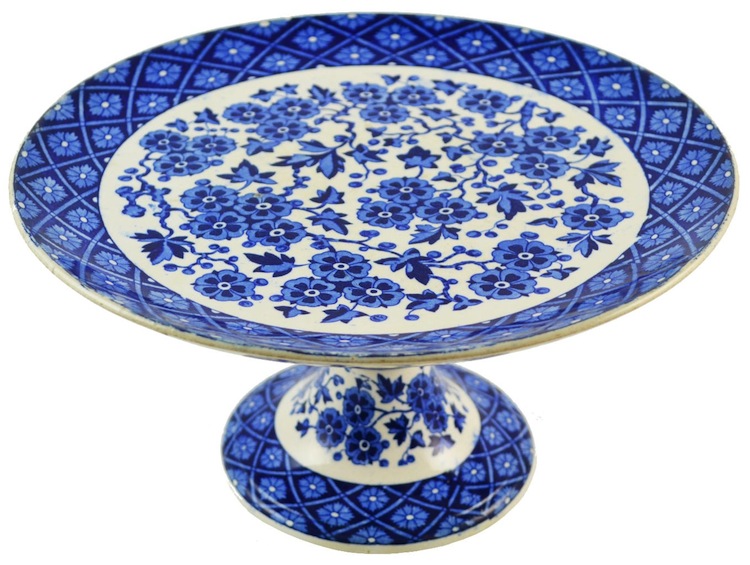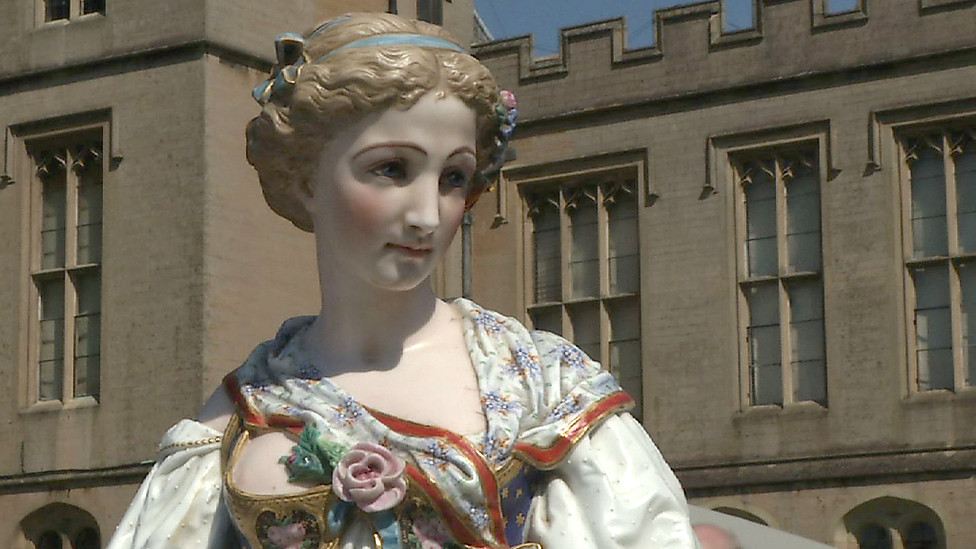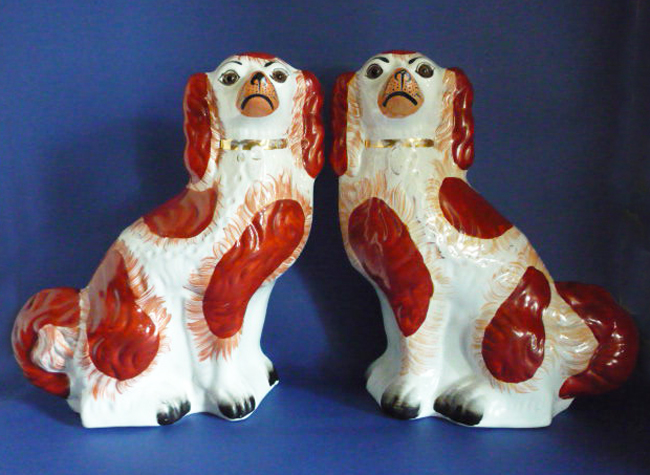Not only is the pottery of the 19th century colourful and decorative, it can often provide you with a fascinating visual record of the major events and personalities of the Victorian age. Prices range from dinner services worth thousands, to simple tiles that sell for around £30.
Firms such as Pratt & Co perfected colour transfer printing from c.1840 and pot lids, boxes, plates and other wares were decorated with images of the royal family, the Crimean War and the Great Exhibition. Royal events such as Queen Victoria’s wedding, the coronation and jubilees, inspired a huge number of specially decorated wares. Many of these were originally sold for a few shillings but are now avidly sought after.
Other highly popular collectables from this period include Staffordshire figures, blue-and-white transfer printed wares, Wemyss ware and ironstone. If all these are too expensive, look out for 19th century tiles – you can still find Victorian printed versions for £20 to £50.
Printed blue-and-white pottery

Value depends on condition and pattern: as these three meat plates are all slightly damaged, they’re moderately priced between £200 and £400 each. Less sought-after patterns start at around £120; the most valuable may be £2,500 or more.
Dinner services
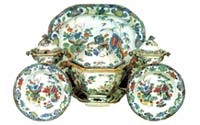
This Mason’s ironstone dinner service is made of a heavy earthenware substance first patented in 1813. It’s usually easy to identify wares made by this factory as they’re nearly always marked.
The details of these marks changed over time: if the word “improved” appears it means the piece was made after c.1840. Large dinner services are especially sought after and valuable. Worth £4,000 to £6,000.
Wedgwood
Coloured objects, such as the 1780s moulded Jasperware vase pictured at the top of the page, were made by dipping the object into slip (diluted clay). These wares were also made throughout the 19th century and later. However, the blue used in the 19th century tends to be darker, while 20th-century copies are of lesser quality. Worth £500 to £800.
Wemyss ware
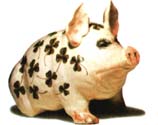
Wemyss pigs such as this were made in Fife, Scotland, from 1880. There’s also a wide range of Wemyss mugs, vases, jugs and jam pots, all of which have risen greatly in value recently. This pig is probably worth more than £800.
What to look for:
- good-quality painting
- tablewares with red borders – these are early
- figurative subjects – especially cockerels, cats, bees and pigs
- large pieces
Staffordshire figures
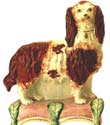
Colourful creamware and pearlware figures, such as this spaniel, were produced on a huge scale in the late 18th century and throughout the 19th century. Some were made in Scotland and Wales, but the majority came from the Staffordshire potteries, so all examples of this type are known as Staffordshire figures. Nearly all examples are unmarked, so the style of each should be carefully examined.
Painting – the detailed painting of the dog’s face is a sign of quality and indicates an early date. Later figures are painted more simply.
Value – subject matter and rarity affect the price; figures of animals and royal, political and military subjects are particularly desirable. The spaniel would be worth around £1,200.
Reproduction or fake?
Less valuable Staffordshire figures were reproduced throughout the 20th century, often from the same moulds as genuine Victorian pieces. Even though genuine figures are often highly individual, these copies can be identified in several key ways:
Genuine:
- crisp modelling
- detailed painting
- colourful decoration
- finger marks inside – from press moulding
- heavy thick walls
- erratic, widely spaced crackling in glaze
- soft gilding
- kiln grit and glaze on foot
Copy or fake:
- soft definition
- little detail
- little colour
- smooth inside – from slip casting
- thin fragile walls
- regular, exaggerated crackling in glaze
- bright gilding
- glaze wiped from foot

